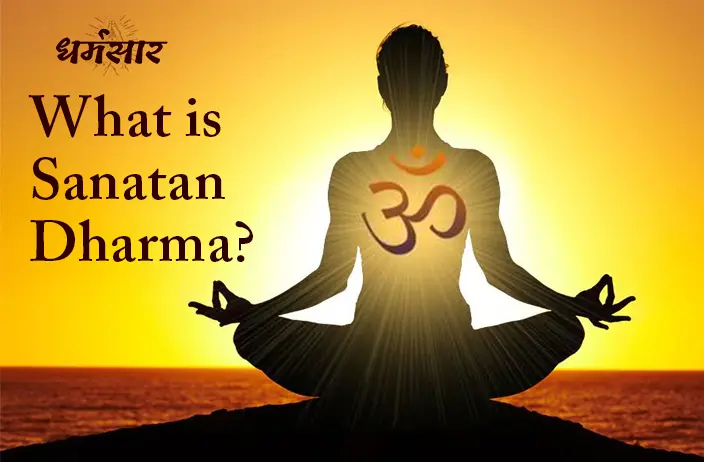The Hindu religion is also known as Sanatana Dharma. The religion of the Indian subcontinent is referred to as
Sanatana Dharma often referred to as Hinduism, is one of the most prominent religions in the world. However, you will find that Sanatana Dharma is often referred to as a way of life rather than religion. In this blog, we will clear all your doubts related to Sanatana Dharma and help you to learn more about it.
The origin of Sanatana Dharma is extensively argued. Where western scholars believed that Hinduism was established in the Indus Valley by about 5000 years, on the other hand, most Vedic scholars disagree on this. But it is believed that Sanatana Dharma is not only created by any one person or a group of persons. It was established by God himself.
According to mythology, Lord Vishnu, one of the trinity, created Brahma and gave him knowledge of the Vedas, and with this knowledge, Lord Brahma created the entire universe. Sanatana Dharma, then, was created by God at the beginning of human history.
Here the word Dharma doesn't mean the western approach of "religion". Religion is a very broad concept.
Everybody has a distinct religion. A Kshatriya's religion is distinct from a Brahmin's. Both the father's religion and the son's religion are distinct from one another. A citizen's religion is distinct from a monk's faith.
While everyone's religion is unique, there are some aspects that they all share, such as the worship of God.
As of now, there are four Vedas. These are Atharvveda, Saam Veda, Rigveda, Yajurveda. Although earlier there was only one Veda, it was later divided into smaller sections.
However, Sanatana Dharma derives from the Vedas. The Vedas are divine information that God has left behind; these were not written by anyone. The Veda is the origin of everything, the answer, and the way to every destination. He is the only source of truth and has total control over everything.
The Vedas are written in Sanskrit. It is an ancient language of the gods that is used by traditional Hindus as a medium to create literature and important documents. It is a specialised language intended for specific operations, not a generic language like other languages.
The Vedas also provided the Varna system, which teaches us about the fundamental structure and responsibilities of society. Varna is far more complicated than that, despite the widespread misconception that it is entirely defined by birth or the type of work we undertake.
A person's character is defined by three things.
The Varna system is the key to India's prosperity in all spheres and its golden age. Varna divides society into four different classes. These classes are mentioned below-
Brahmins are scholars, medical professionals, educators, etc. They live a life completely devoid of wealth, fame, or otherworldly things, and devote themselves to people. In second place are Kshatriyas, who protect from Kshatriyas or harm. They are warriors, kings, and generals, who fought and protected the people while overseeing the administration of the kingdom.
A Kshatriya who lives in the same household as a Brahmin does not enjoy great wealth, but he does occasionally get some money from his responsibility for running the household. Vaishyas are business people. They are wealthier than brahmins and Kshatriyas because they are masters of all professions and perform the dominant role.
The fourth varna of the Vedic varna Vedastha is Shudra. Shudras are therefore the ones who are most free from obligations and are in charge of assisting others. Despite popular belief, Shudras worked as officers, public servants, engineers, and physicians in addition to being even wealthier than Vaishyas.
It is frequently observed that there are numerous distinct Hindu sects. As a result, there are two main sects. Both of these are, as follows:
The group that worships Lord Shiva and Mother Shakti is known as Shaivism. Many Shiv Sampradayas exist, including the Nath and Datta Sampradayas. Vaishnavas, on the other side, are those whose lives are centred on Lord Vishnu and all of his incarnations.

 डाउनलोड ऐप
डाउनलोड ऐप